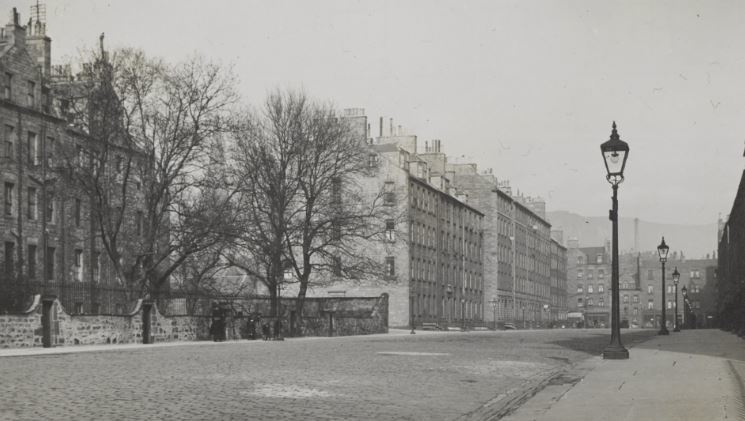From extra marital affairs to criminal accusations, one man has uncovered all manner of goings-ons behind closed doors in Edinburgh’s tenements.
“Uncovering forgotten lives, one stair at a time” is the aim of Tenement Town, an online project which explores the lives of the people who once lived in the southside’s communal buildings.
The site was created by local history enthusiast Diarmid Mogg who was keen to find out more about the buildings he passes by on a daily basis.
Diarmid, a southside resident, told STV News: “If you look at it through time, it’s layers and layers of life. I think it makes you feel less alone, in a city, to think that you’re sharing the space through time.
“When you string them all together, you kind of get a strange sort of biography of the building, and the lives of the people who lived in it. Everywhere you look there’s something fantastic.”
The stories are compiled by searching street addresses in old newspapers via The British Newspaper Archive and finding out further details through birth and death certificates.
Diarmid said the stories he has uncovered are “just as exciting, in many cases, just as salacious as Mary Queen of Scots’ many lovers, just as depressing as the Burke and Hare stories, just as violent as those, but once reported in the papers for maybe a week at the most, vanished forever and never thought about again”.
Behind the door of Number 10, St Patrick Square, there is a rich history.
A man who drowned after a steamship sank off the coast of Canada in 1863 lived there, as well as a widow whose 22-year-old son was killed in the trenches of France in 1915.
A barman, John Taylor, was also a resident in 1902 and was accused of selling whisky on a Sunday to two police officers disguised as sailors. The verdict was “not proven”.
Through his work, Diarmid was “amazed” by the amount of “salacious divorce stories” intertwined in Edinburgh’s domestic history.
He said: “In the old days, Edwardian and Victorian papers would cover divorce stories in incredible detail.
“Not only do they provide ‘juicy gossip’, but they also give you an incredibly detailed insight into the goings-on of a household.
“There was a divorce on East Preston Street called the ‘Pearman divorce of 1867’ and it featured a woman who had a three or four year long affair with her GP who would visit her to attend to her ‘woman’s issues’, allegedly.”
As the blog gathers popularity, Diarmid has been widening out his research to other parts of the city. Increasingly, he has been dealing with requests from those with a connection to tenements across Edinburgh.
Discussing the importance of exploring the history of buildings through the people who inhabit them, Diarmid said: “It’s layers and layers of life and I think that makes you feel less alone.
“These tenements were here long before us and they will be here long after us.”
Follow STV News on WhatsApp
Scan the QR code on your mobile device for all the latest news from around the country




























